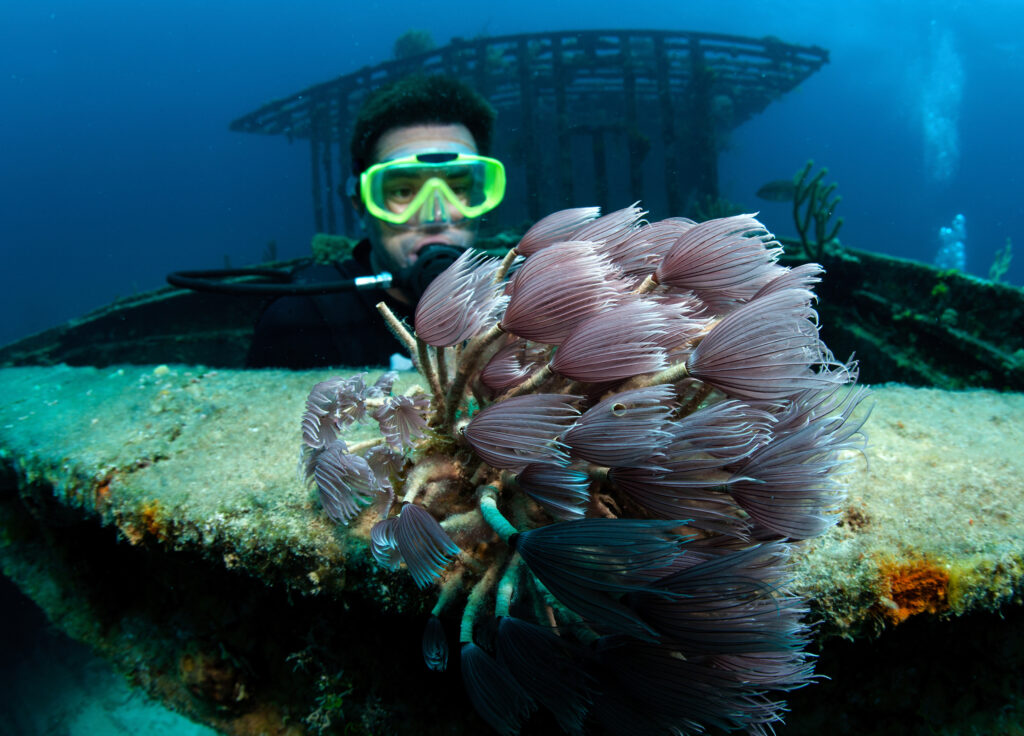What is Activated Carbon in Scuba Diving?

Activated carbon, also known as activated charcoal, is a form of carbon processed to have small, low-volume pores that increase the surface area available for adsorption or chemical reactions. Primarily known for its ability to filter and purify, activated carbon plays a crucial role in various industrial applications, from water treatment to air purification. In the context of scuba diving, this material is instrumental in ensuring that divers breathe clean, uncontaminated air. Its ability to adsorb toxic gases and impurities makes it an essential component in scuba tanks and rebreather systems.
What is a Automatic Diluent Valve (ADV)?

The Automatic Diluent Valve (ADV) is a critical component in the configuration of modern rebreather systems used in scuba diving. This device automatically adds diluent gas to the breathing loop to maintain the correct volume and optimal gas mixture, ensuring the diver’s buoyancy and safety at varying depths. The importance of the ADV in facilitating longer, safer dives cannot be overstated, making it an essential study for divers and technicians alike.
What is Vasoconstriction?

Vasoconstriction is the process by which blood vessels narrow due to the contraction of muscular walls in the vessels, primarily small arteries and arterioles. This biological phenomenon is significant in regulating blood flow and blood pressure throughout the body. For scuba divers, understanding vasoconstriction is crucial because it directly impacts how their bodies react to the underwater environment, including the cold temperatures and increased pressure that are often encountered during a dive.
What is a Drop Weight?

A drop weight, a fundamental tool in scuba diving, plays a crucial role in managing a diver’s buoyancy. By adding or removing weight, divers can achieve neutral buoyancy, allowing them to maintain a stable position underwater without floating upwards or sinking uncontrollably. This balance is essential for conserving energy, enhancing underwater navigation, and ensuring safety during a dive. Drop weights can be attached to a diver’s belt, integrated into buoyancy control devices (BCDs), or even strapped to ankles, depending on individual preferences and specific diving conditions.
What is a Dropoff?

A dropoff in scuba diving refers to a steep underwater slope or cliff that descends sharply from a relatively shallow area to much deeper waters. These underwater geological features are significant for divers due to their dramatic landscapes and the rich marine life they often host. Dropoffs are found in various parts of the world and are treasured for their breathtaking views and the unique diving experiences they offer. These areas are not only visually striking but also ecologically vital, serving as habitats for a wide variety of marine species.
What is a Scuba Diving Hood?

A scuba diving hood is a critical component of diving gear, designed to protect divers’ heads from the cold and various underwater hazards. It plays a crucial role in maintaining body temperature during dives in colder waters, thereby enhancing the overall diving experience and safety. Typically made from neoprene or other insulating materials, the hood covers the head and neck, leaving the face exposed or partially covered. Its primary function is thermal insulation, but it also provides some protection against marine life and minor abrasions.
What is a Rash Vest?

A rash vest, also known as a rash guard, is a type of athletic shirt made from spandex and nylon or polyester. Originally designed to provide sun protection and to prevent chafing from surfboards, rash vests have become an essential piece of gear for many water sports enthusiasts, including surfers, swimmers, and scuba divers. They are particularly valued for their ability to protect the skin from rashes caused by abrasion, UV rays, and stings from marine creatures. In scuba diving, rash vests serve additional functions, enhancing comfort and safety under various underwater conditions.
What is Overweighting?

Overweighting in scuba diving refers to the practice of using more weight than necessary to achieve neutral buoyancy underwater. Proper weighting is crucial for maintaining control, safety, and efficiency while diving. Overweighting can occur due to various factors, including misconceptions about the amount of weight needed, incorrect gear configuration, and psychological influences. Understanding the implications of overweighting and how to manage it is essential for divers of all levels to ensure a safe and enjoyable underwater experience.
What is Hypoventilation?

Hypoventilation, a crucial concept in scuba diving, refers to a reduced rate or depth of breathing that results in inadequate ventilation and increased levels of carbon dioxide (CO2) in the blood. Understanding hypoventilation is essential for scuba divers, as it directly impacts their safety and overall diving experience. In the underwater environment, where divers are subject to various physical and physiological stressors, maintaining proper breathing patterns is vital to avoid complications such as hypercapnia and its associated risks. This entry will delve into the physiology of breathing underwater, the mechanisms and causes of hypoventilation, its effects on divers, and best practices for prevention and management.
What is Immersion Hypothermia?

Immersion hypothermia occurs when the body’s core temperature drops significantly due to prolonged exposure to cold water. This condition is particularly relevant to scuba divers, who often spend extended periods in environments where the water temperature can quickly lead to substantial heat loss. Understanding immersion hypothermia is crucial for divers, as it can lead to severe health consequences if not promptly recognized and treated.
